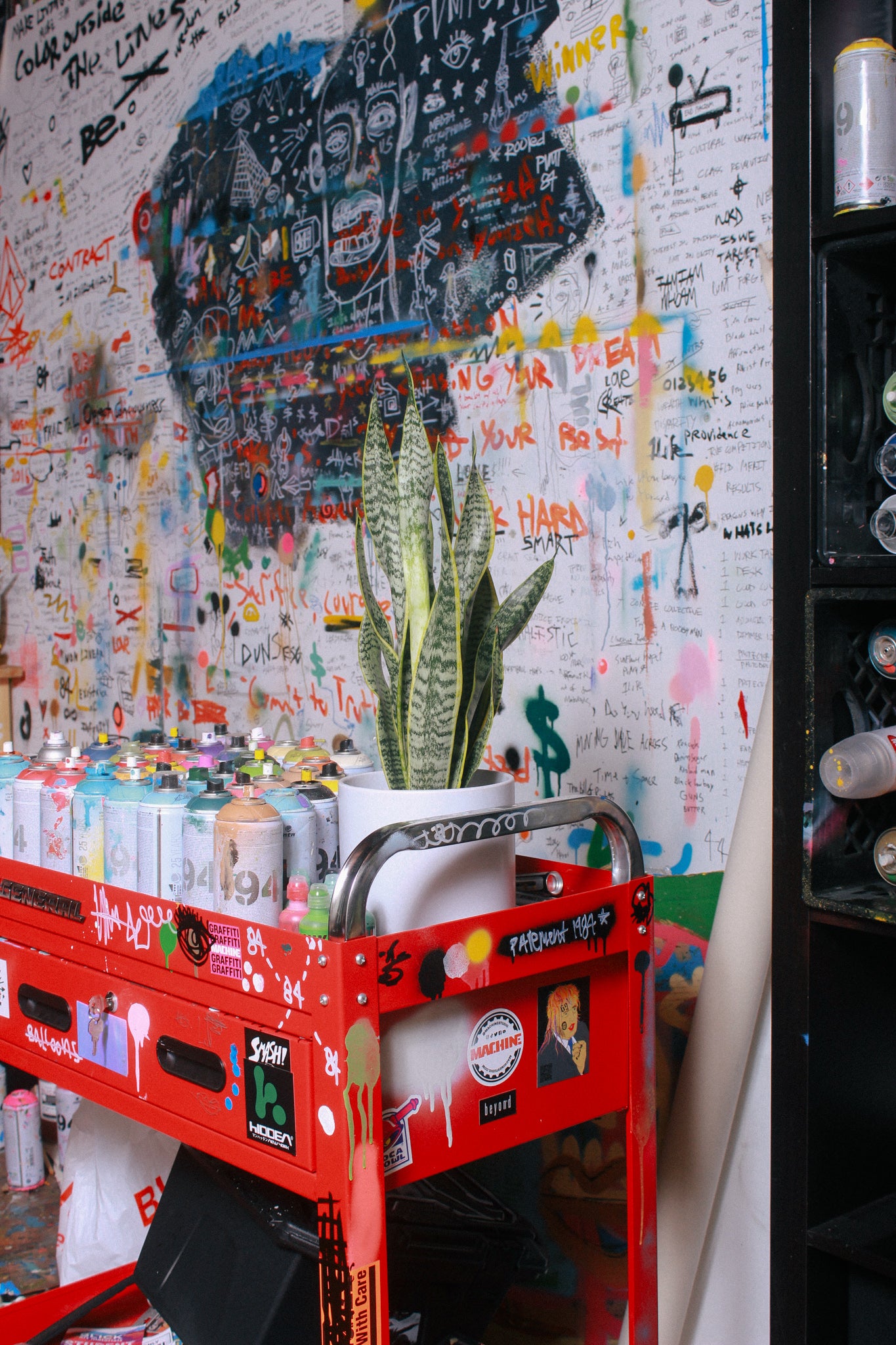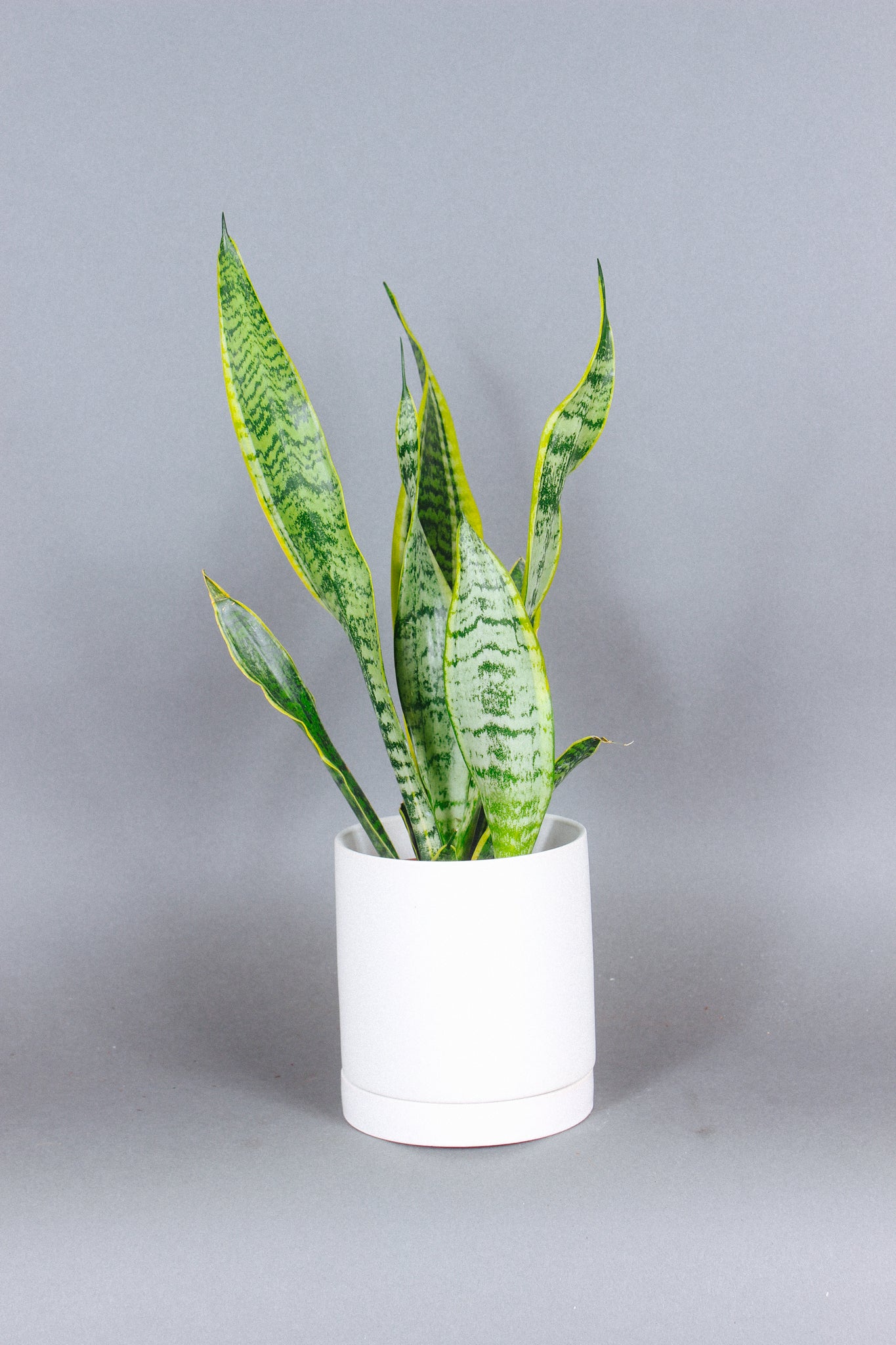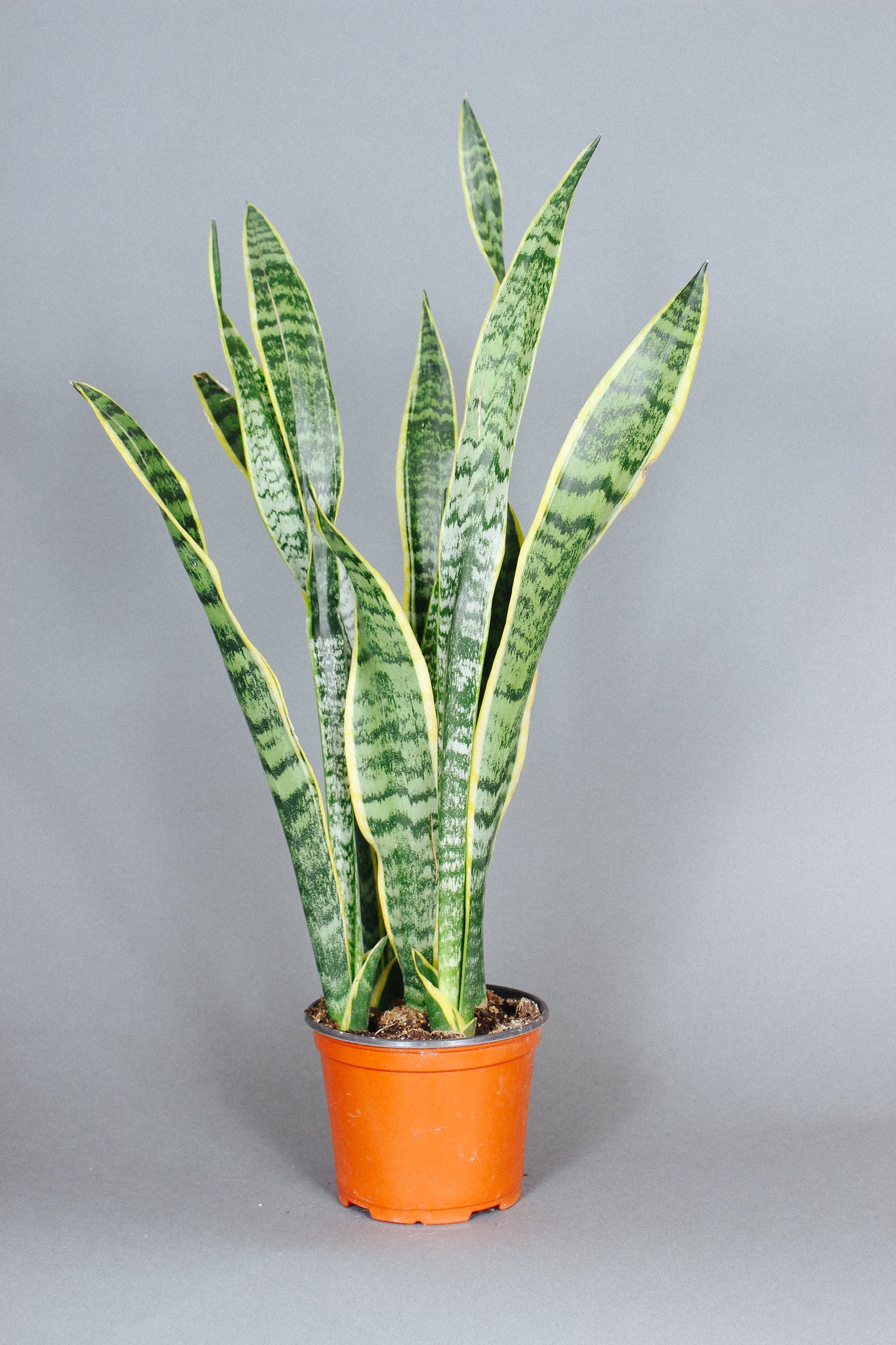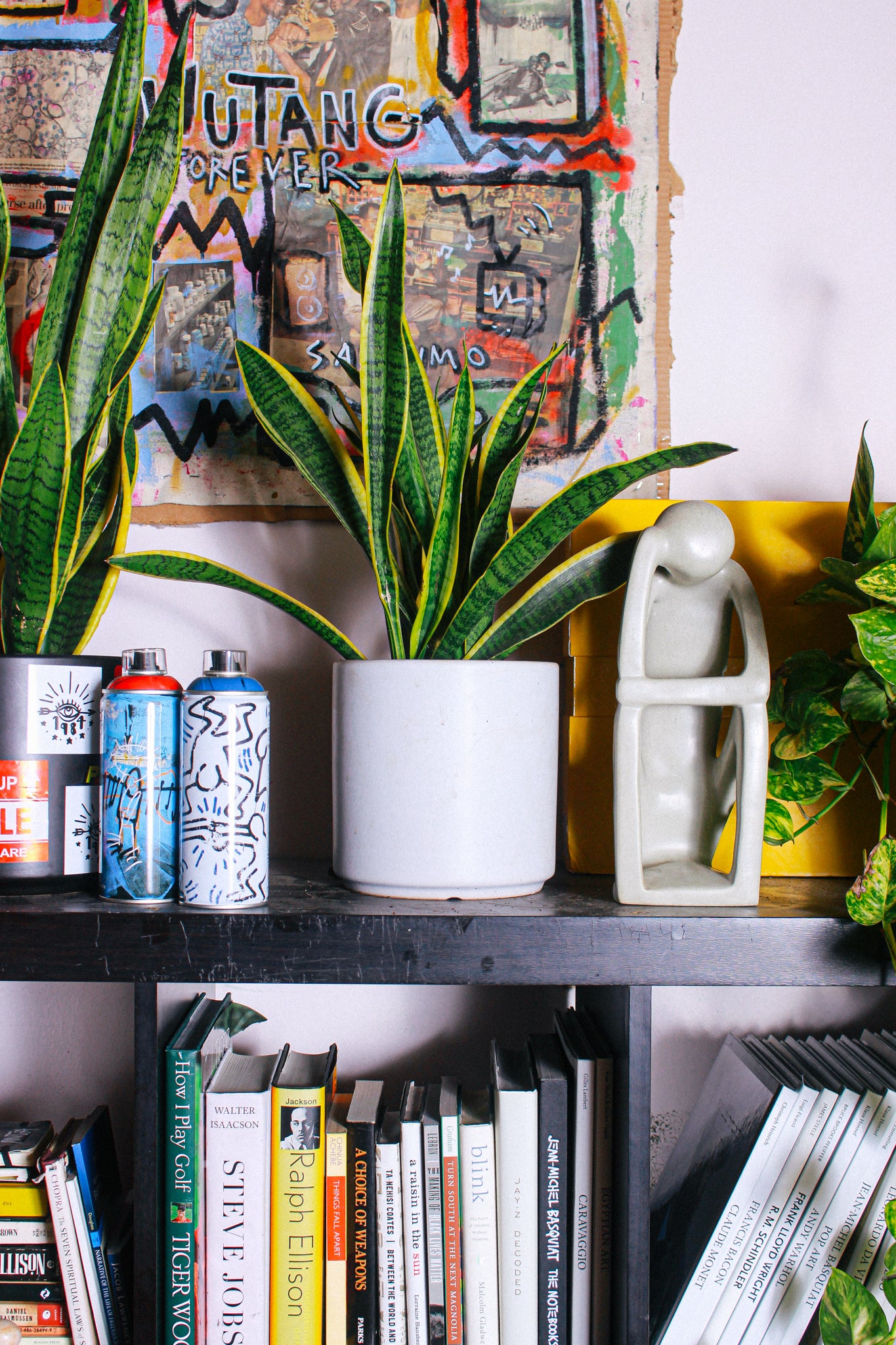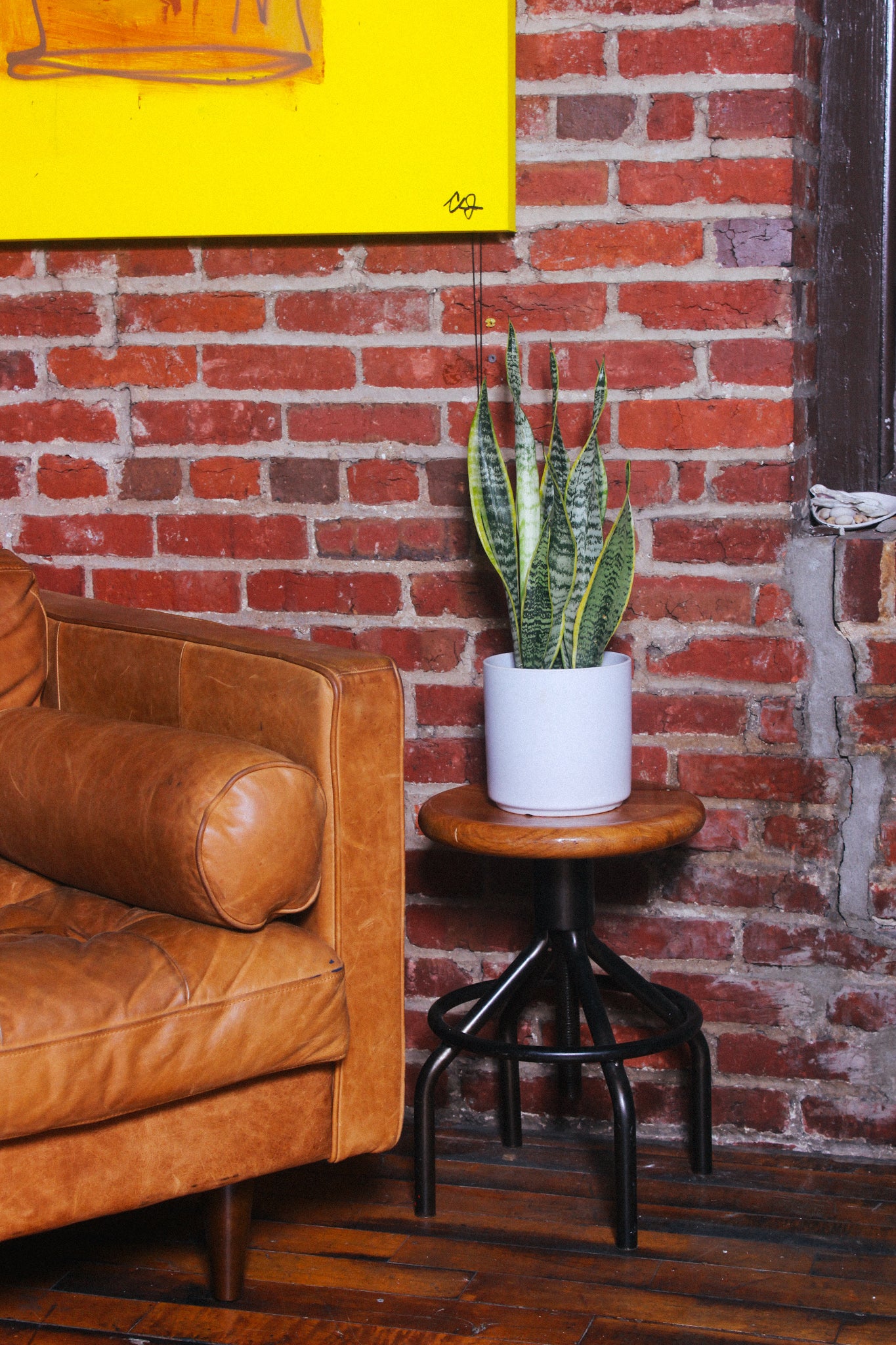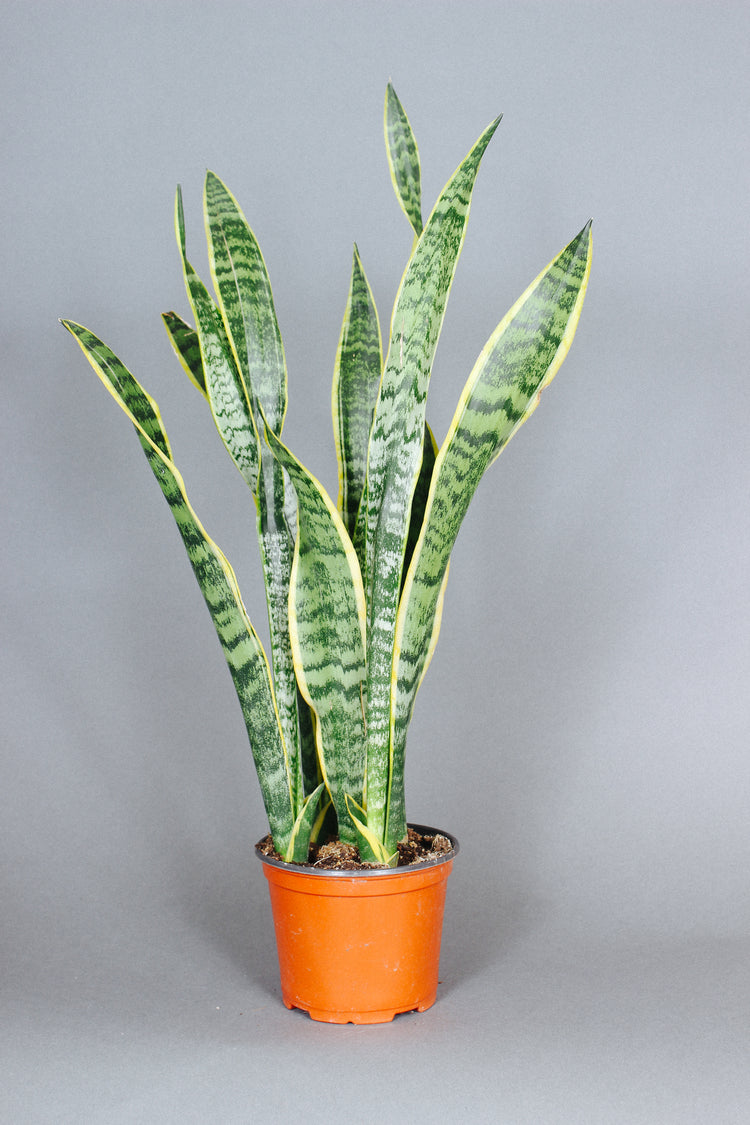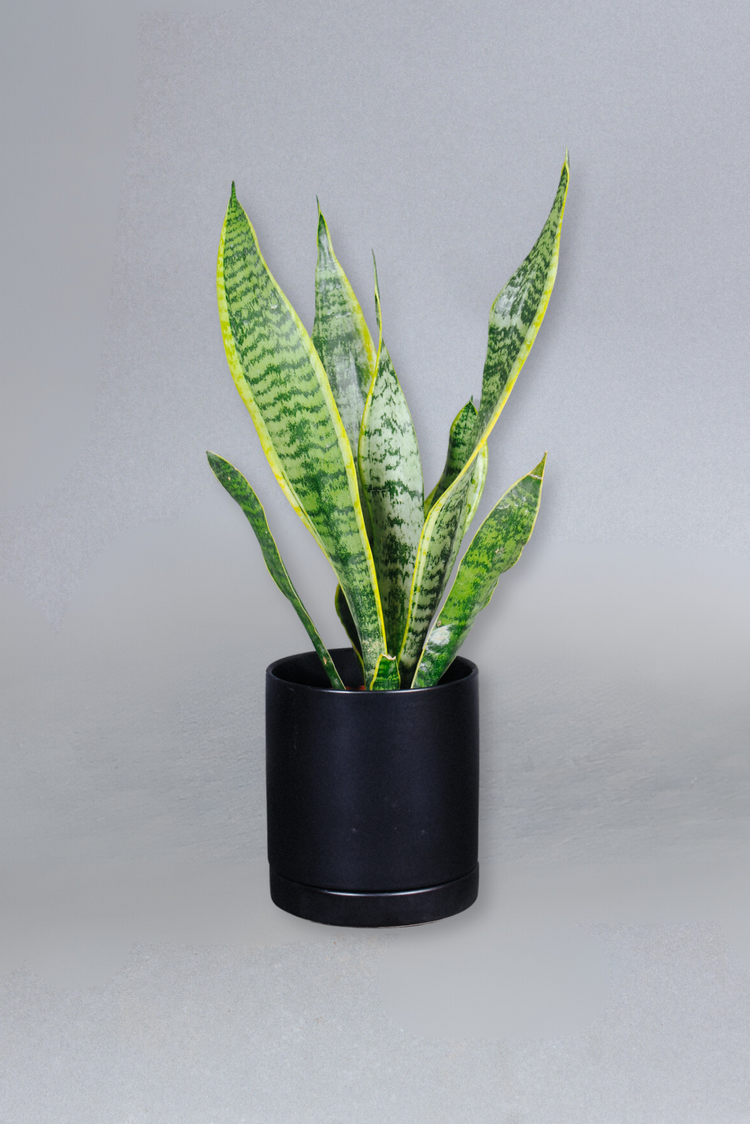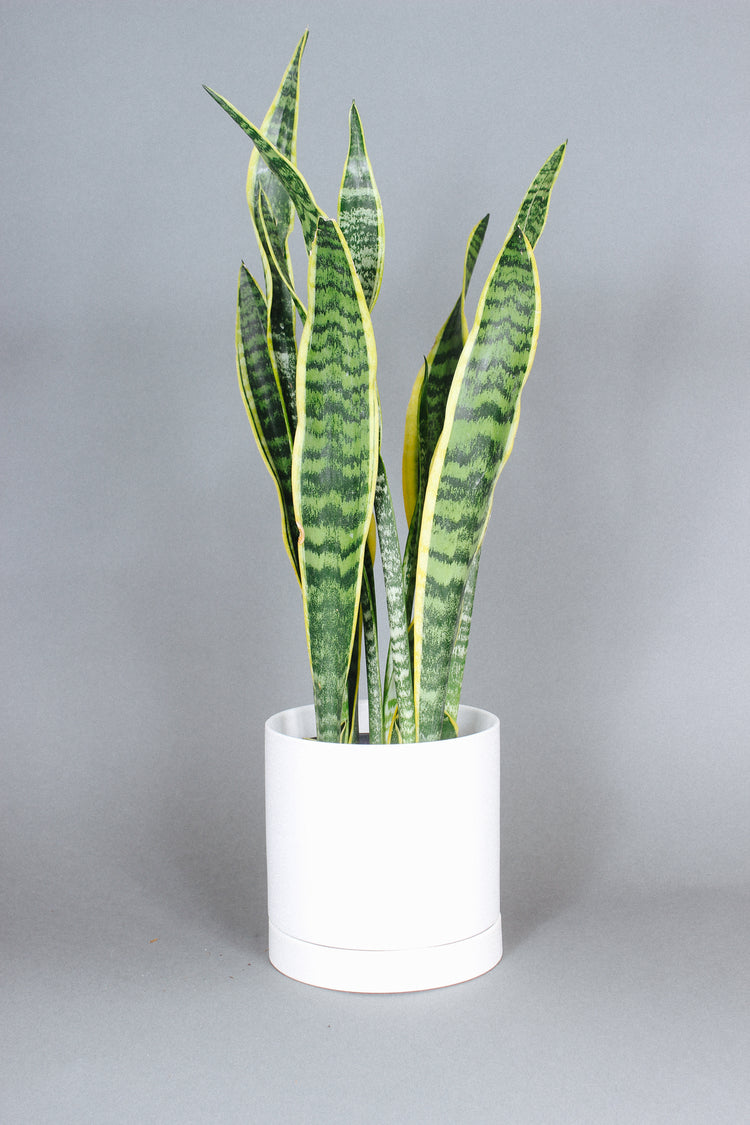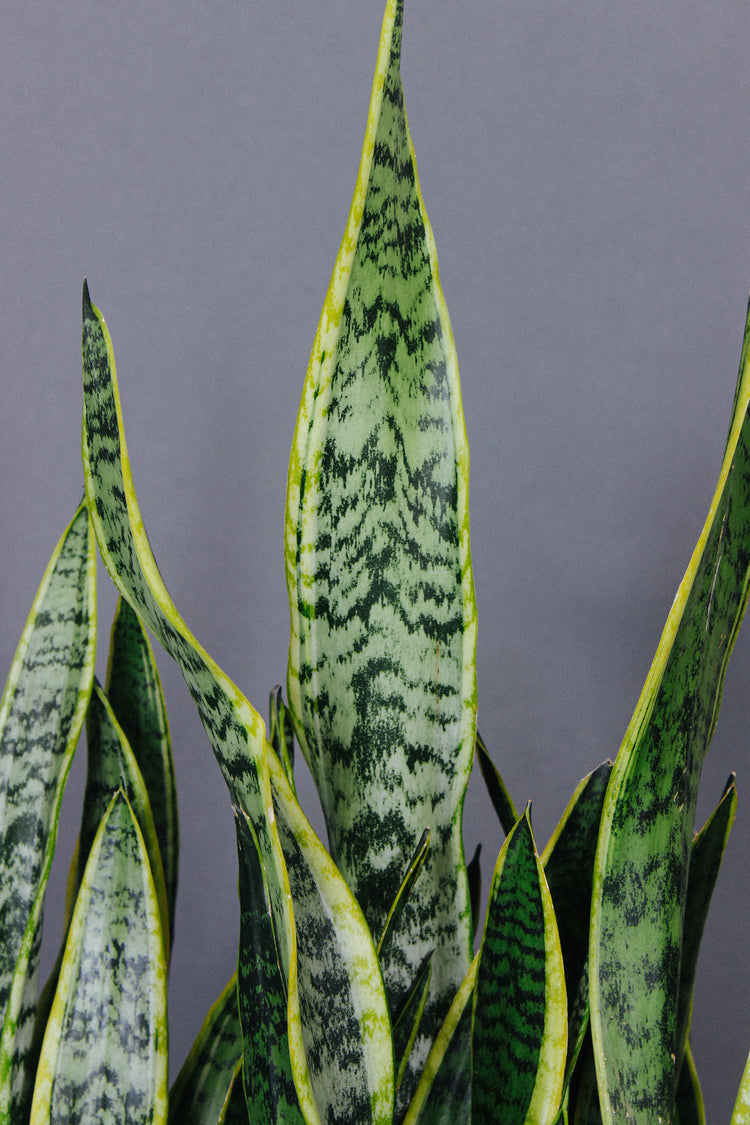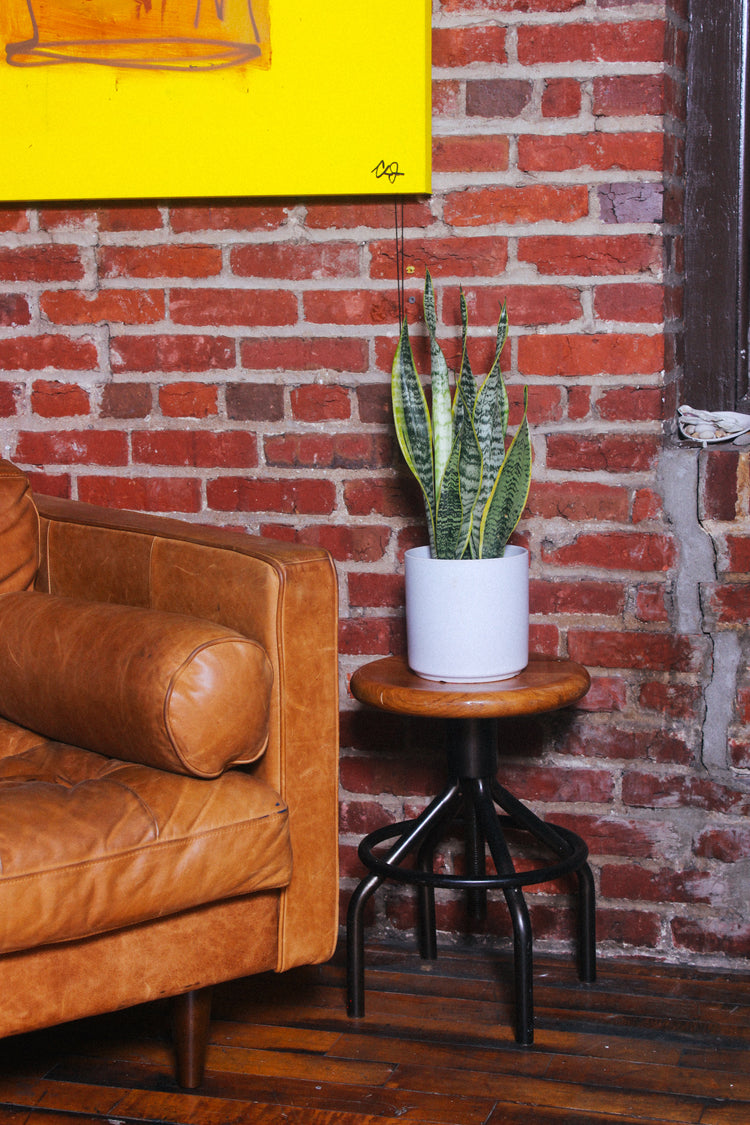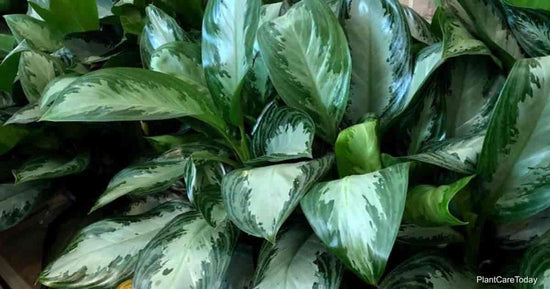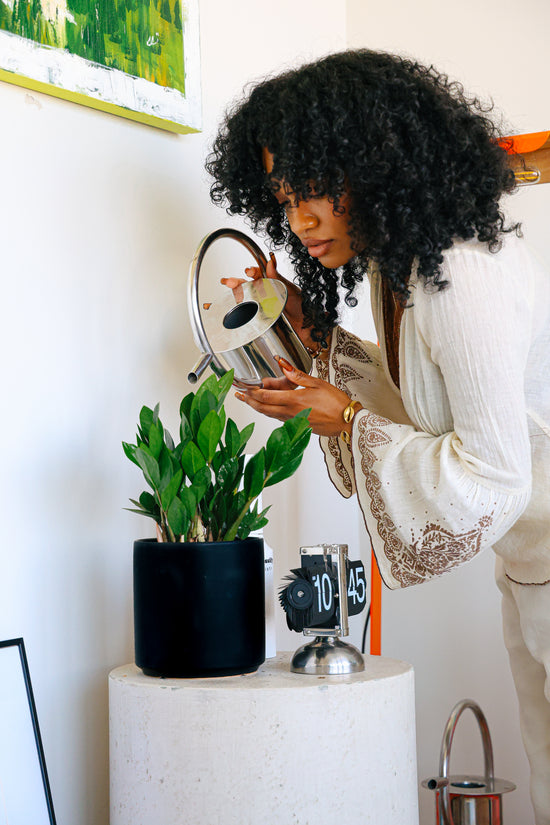Maintenance: Low | Climate: Warm + Dry | Light: Bright, Adaptable | Watering: Infrequent | Pet Safe: No
The Sansevieria Cylindrica shares the classic qualities of other Snake Plants - being adaptable, neglect-friendly, and tolerant to drought. Recognized by its tubular, upright growth, each thick, round, leaf can grow up to 6 feet tall indoors. This is one of the easiest plants to care for!
LIGHT
This plant prefers bright light but is adaptable to both direct sun and low lighting. Under low light, this plant will grow slower than it would in an environment with plenty of sunshine. Placement near a west, south, or east facing window will make the Sansevieria Cylindrica feel at home.
WATER
Water only after the soil has fully dried. This plant stores water in its leaves to survive periods of drought, so it's safer to underwater than overwater. If you notice that the thick leaves have shriveled or wrinkled, the plant is likely thirsty.
ENVIRONMENT
Snake Plants originate from tropical areas of West Africa, however, they thrive in average dry indoor conditions. Maintain temperatures between 60º-85º to keep your plant healthy. These are great outdoor plants under the right climate.
PRUNING AND PROPAGATION
Pruning old, brown, or yellow leaves is essential for the Sansevieria's health. Always prune with clean pruning shears or scissors. You can also prune healthy leaves to propagate and grow a new plant right from home.
Pruning Sansevieria Cylindrica:
- Use clean, sharp shears or scissors.
- Prune away damaged bits or cut a leaf entirely at a 45º angle.
- Healthy sections can be propagated in water (below).
Propagating Sansevieria Cylindrica:
A Cylindrica leaf cutting can be propagated by water or by division at the roots. Here's how:
PROPAGATE BY WATER
1. Select a healthy leaf
2. Cut at a 45º angle or cut an upside down "v" shape, using clean, sharp shears. The angle is important to ensure the cut does not rot while in the water.
3. Set the leaf cutting out to callous over for 24-48 hours.
4. Place in a clean glass of water and set in a bright place.
5. Pot in moist soil once the roots are an inch long.
Note: Be sure to maintain clean water for healthy roots!
PROPAGATE BY DIVISION
You can divide a cluster of leaves into a separate plant by:
1. Removing the plant from the pot.
2. Examining which clusters you'd like to separate.
3. Gently working the root ball free of dirt (rinse off if needed).
4. Separate clusters at the roots (cut with a sharp, clean knife if needed).
5. Pot in moist soil to create a separate plant.
COMMON PROBLEMS
Sansevieria Cylindricas usually won't give you any issues, however, here are some things you might notice:
YELLOW LEAVES
Snake plants most commonly develop yellow leaves when the soil has been wet too long, due to overwatering or poor drainage. Leaves will also yellow under low lighting. Water only once the soil has gone dry and move your plant to brighter light.
BROWN LEAVES
Brown leaves may develop when exposed to intense, direct sunlight or under very dry conditions. If your plant is on the windowsill of a west or south-facing window, offer it partial shade during the day. If you haven't watered it recently, give it a generous drink!
Note: Brown leaves that are soft and mushy are a sign of overwatering or soil that has been wet for too long.
SHRIVELED LEAVES
Leaves begin to shrivel on a Snake Plant when the plant is thirsty. Water gets stored in the leaves, so wrinkles are a sign that storage is depleted. Mushy leaves on the other hand, are a sign of root rot, especially if the soil is wet.
-------
Questions? Ask us!





